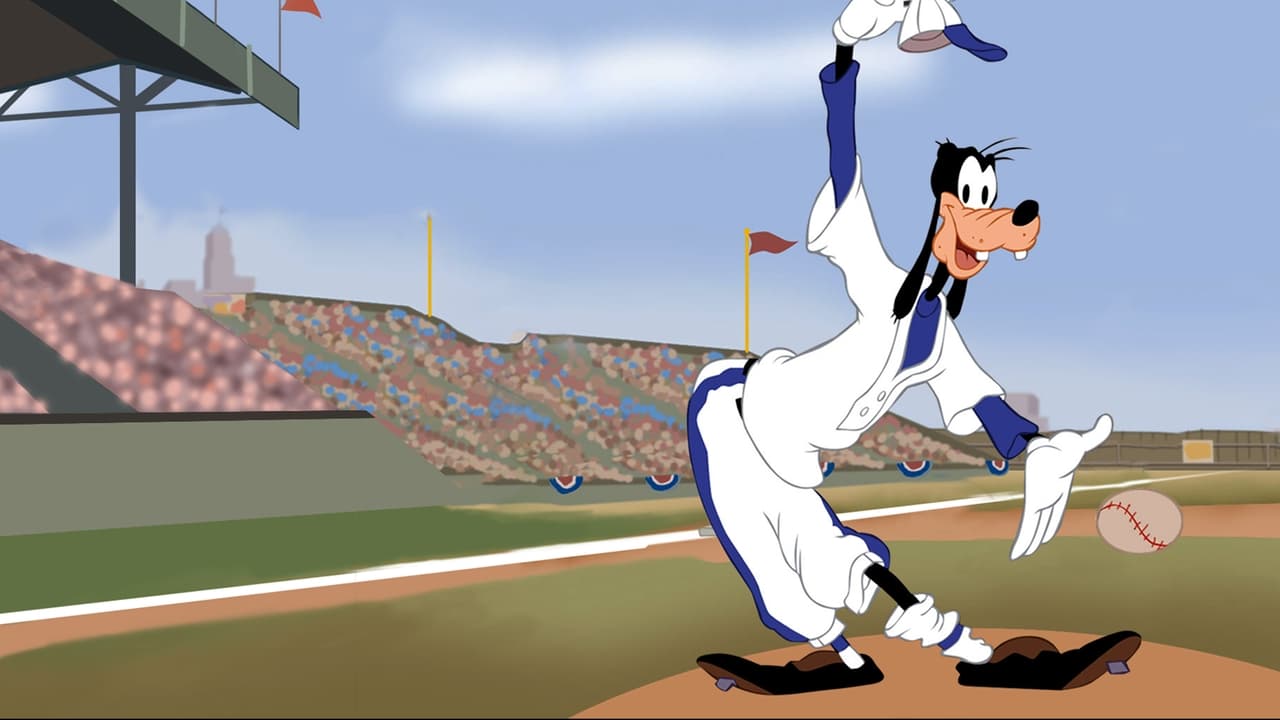


This is a Goofy "How To" short produced by Disney. There will be spoilers ahead:This is a typical Goofy short. There's a short setup segment covering the equipment, playing field and the basics of baseball and giving the animators an opportunity to do a few visual gags with Goofy in the standard Baseball getup, including a nice bit with the shoes. They show various pitches and take the playing rituals to absurd extremes.The second half of the cartoon is the deciding game of the World Series, Disney style. More accurately, it's the last half of the last inning of the deciding game of the World Series. Goofy is the pitcher, with a three run lead and two outs. All he needs is to get one out and his team wins. Naturally, he manages to blow the lead.Every player looks like Goofy, so it's Goofy batting, pitching, fielding and so on. The gags are visuals which play on the narration and are mostly puns. The ending is a rather predictable though funny ending.This short is on the Disney Treasures Complete Goofy DVD set and is well worth having. Recommended.
... View MoreAfter being deeply impressed by the sketch-based Goofy short The Art of Self Defense,I decided to see Goofy take on America's favourite past time.The plot:Opening with a birds eye view of how the baseball pitch is set up,the movie then goes down to earth,and has Goofy show "the art of baseball",from long hours training,to reaching the World Series.View on the film:Staring the short with a title card that say's "Disney's education department",the screenplay, (whose writers are not credited anywhere!) sadly drains any paternally wild humour by taking the movie in a dry,exposition heavy direction.Along with the dry screenplay,Fred Shields narration lacks any sense of warmth or irony,whilst director Jack Kinney gives the animation a plain,minimally detailed appearance,which leads to this short being far from a favourite past time.
... View MoreThe first half of this is explaining, through some somewhat-amusing examples, the basics of baseball: hitting, pitching, the different kinds of pitches, etc.The really funny part begins when they show the bottom of the ninth inning of the last game in the World Series. It's The Gray Sox versus the Blue Sox. One team is leading 3-0 and their pitcher is throwing a no-hitter. What happens after that is hilarious as the losing team creeps back into the game with a climactic finish. The scenario is completely exaggerated for a humorous effect and it works. I found myself laughing out loud at a few of the scenes.This short starts off slowly and gets better and better as it goes on.
... View MoreA Walt Disney GOOFY Cartoon.The Goof demonstrates HOW TO PLAY BASEBALL in the worse possible way.In this "How To" entry, the National Pastime is subjected to much good natured ribbing. The jokes and animation are both fine, though unremarkable. John McLeish narrates in his best documentary style.Walt Disney (1901-1966) was always intrigued by drawings. As a lad in Marceline, Missouri, he sketched farm animals on scraps of paper; later, as an ambulance driver in France during the First World War, he drew figures on the sides of his vehicle. Back in Kansas City, along with artist Ub Iwerks, Walt developed a primitive animation studio that provided animated commercials and tiny cartoons for the local movie theaters. Always the innovator, his ALICE IN CARTOONLAND series broke ground in placing a live figure in a cartoon universe. Business reversals sent Disney & Iwerks to Hollywood in 1923, where Walt's older brother Roy became his lifelong business manager & counselor. When a mildly successful series with Oswald The Lucky Rabbit was snatched away by the distributor, the character of Mickey Mouse sprung into Walt's imagination, ensuring Disney's immortality. The happy arrival of sound technology made Mickey's screen debut, STEAMBOAT WILLIE (1928), a tremendous audience success with its use of synchronized music. The SILLY SYMPHONIES soon appeared, and Walt's growing crew of marvelously talented animators were quickly conquering new territory with full color, illusions of depth and radical advancements in personality development, an arena in which Walt's genius was unbeatable. Mickey's feisty, naughty behavior had captured millions of fans, but he was soon to be joined by other animated companions: temperamental Donald Duck, intellectually-challenged Goofy and energetic Pluto. All this was in preparation for Walt's grandest dream - feature length animated films. Against a blizzard of doomsayers, Walt persevered and over the next decades delighted children of all ages with the adventures of Snow White, Pinocchio, Bambi, Peter Pan and Mr. Toad. Walt never forgot that his fortunes were all started by a mouse, or that simplicity of message and lots of hard work always pay off.
... View More